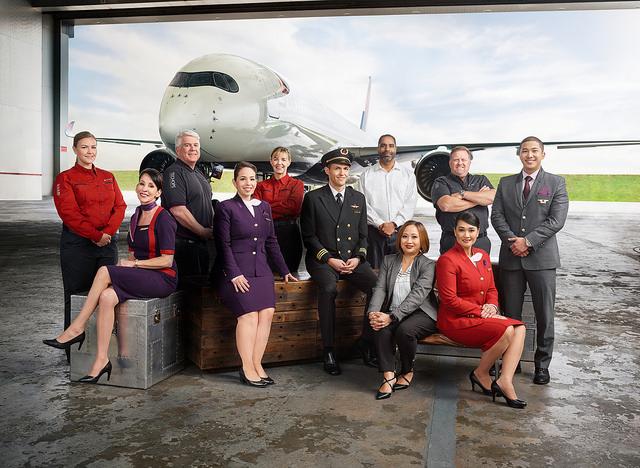
Points to be considered while designing uniform:
- General profile of the employee
- Image and identity of the property
- Comfort in wear
- Purpose of work
- Appearance & style
- Climatic conditions of the place
- Budget & value for money
- Fabric
- Ease of availability of material
- Staff turnover
The following points should be kept in mind while designing uniforms –
Table of Contents
1) Comfort: ( size and stitching)
Since the wearer has to wear the uniform for long hours, they should be most comfortable. It should be loose enough to allow the staff to perform all tasks efficiently without causing impediments. Tight clothes restrict movement while causing continuous irritation and physical discomfort and result in reduced output and poor job performance. Staffs whose jobs involve carrying heavy suitcases, balancing food trays, or any reaching, lifting and stretching need space or stretch room under the arms, across the back and around the waist and chest.
2) Practicality : ( usefulness of design features, pockets, etc.)
Besides comfort, certain other points need to be kept in mind. Pockets, collars, belts or sash design should be carefully thought out. Restaurant staff needs pockets to be roomy enough for holding order-taking pads, etc. Straight pockets on the side, in jackets or trousers, are convenient since items do not crumble or break or spill out upon leaning or bending forward over a table or counter. Slanted pockets on the side seam are unsuitable for putting in the paper, etc. easily.
Collars and cuffs should be smooth and unpuckered, not too tight or stiff. Accessories should be avoided as far as possible since they make laundering difficult. They also have a tendency to get lost or misplaced creating an incomplete look appearing very shabby. Zips are more convenient than buttons and hooks. Trouser and shirt combinations work best for most strenuous jobs for both genders.
3) Durability and ease of maintenance ? type of fabric used)
The type of fabric used will differ with the location of the employee. The requirements of a chef working in a hot kitchen will be different from those of a front office assistant in the air-conditioned lobby.
Various fabrics are available according to their launderability, comfort and ease of maintenance.
- COTTON – 100% cotton items are advisable for hot, uncomfortable areas especially kitchens since they ‘breathe’ and are cooler. Pure cotton is difficult to maintain so unions or blends of cotton and synthetics can be used.
- WOOL – is a requirement in cooler temperatures (air conditioning) and is indicative of status. Blended or pure wool can be used for suiting. This needs dry-cleaning and is therefore expensive to maintain. These are frequently used only for management positions.
- SILK – is another fabric commonly used for the female supervisory and management staff. It is commonly used for restaurant hostesses, front office staff and housekeeping supervisors.
- RAYON – is another popular fabric, especially when blended with other fibres.
- NYLON – has good washability but develops static, tending to stick to the body in hot areas as it allows no circulation of air.
- TERRYCOT – most popular choice for uniforms as they have the advantages of both natural and synthetic fibres.
- DRILL – drill cotton is the popular choice for chef coats and aprons as it is cool, durable and easy to maintain.
- GABERDINE – popular suiting material, as they keep up appearances.
4) Suitability : (with regard to individual appearance)
The uniforms must be designed to suit the average individual rather than a specific body type. This means that the uniform should look equally attractive to a thin person, medium body type or a large – proportioned individual.
5) Appearance / Aesthetics: ( colours, design, styles )
The uniform must harmonize with the décor by blending or contrasting. The colour and style should coordinate with the ambience of the location or work area. For example, in the lobby, the uniforms of all the lobby staff should be coordinated with the décor and with each other.
6) Climate conditions of the place
7) Image and identity of the property
8) Budget and value for money
9) Ease of availability of fabric
10) Staff turnover.
Uniforms should be re-designed periodically. This is so because wearing the same uniform for a long time becomes boring and monotonous for the employees and also present an unchanging monotonous environment for the regular guests as well. Also, when a hotel redesigns or adds an outlet with a changed or new theme, the uniforms need to be upgraded or designed accordingly. To keep track of designs used during various periods for various departments and different levels of staff, a Uniform Specification Card is used. This mentions the period during which a particular uniform design for a particular level of employee of a department was in force and also defines the items (shirt, trousers, etc. ), the fabrics, colour contrast or combinations, the accessories ( buttons, cufflinks, nameplates, cummerbunds, sashes, aprons), neck wear ( cravat, ties, scarves ), footwear ( shoes, sandals, bellies), headgear (caps, turbans ), as applicable.